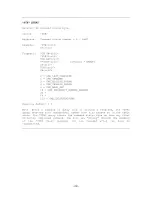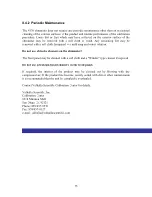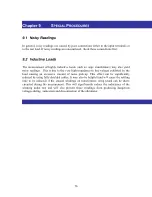
7
7
Chapter 10
.
T
HEORY OF
O
PERATION
Apparent malfunctions are often the result of misinterpretation of specifications or due to
an incomplete understanding of the instrument.
A thorough review of the operating
instructions for this instrument is recommended prior to any component
replacement.
Check to be sure that cables and other test equipment are in good working
order before attempting to troubleshoot the ohmmeter.
The following guidelines have been established to help solve the problems that cannot be
eliminated by reviewing the operating instructions.
10.1 Localizing the Problem
The key to successful troubleshooting is to localize the problem as much as possible
before trying to pin the problem down to a specific component. Certain questions should
be asked such as "Does the problem occur on all ranges or on a specific range only?”
The power supplies are also one of the first things that should be checked.
As it is not possible to anticipate all failure modes of the ohmmeter, servicing personnel
should become familiar with this chapter of the manual to gain a complete understanding
of the internal workings of this instrument.
10.2 Component Replacement
If the problem has been identified as a faulty component, the accuracy of the ohmmeter
can be maintained only if the following precautions are taken:
•
Use only the specified replacement component or its exact equivalent. Spare parts
can be ordered from your nearest Valhalla Scientific Service Center or from the
factory directly by referring to the Valhalla Stock Number listed in the Parts Lists
section at the back of this manual.
•
Use only 63/37 grade rosin core electronic grade solder with a 50W or lower
maximum power soldering iron.
•
When soldering, heat the terminal of the component, not the solder. Apply solder
smoothly and evenly. Do not move the component until the solder has cooled.
Bad solder joints can cause additional problems!
•
Static sensitive parts require special handling procedures. Always treat an
unknown part as if it were static sensitive.







































